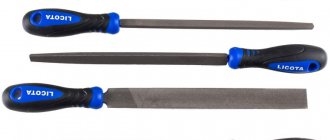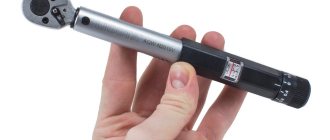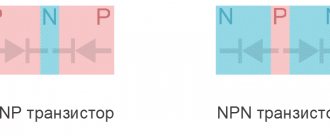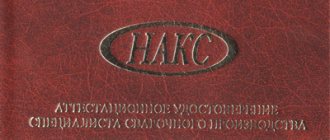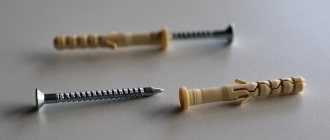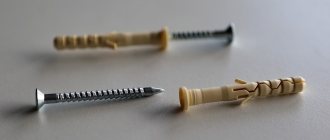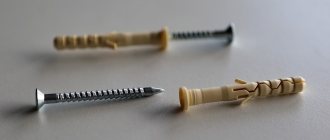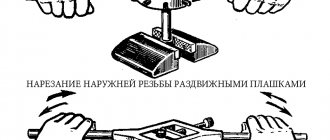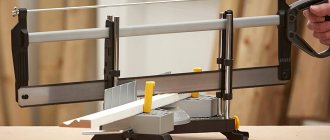The evolution of tools has led to the fact that hand-held instruments have been replaced by electric ones. Some assistants have not changed their appearance over many years of use; such a tool can be considered a file, with which you can perform various operations.
What is a file?
There are many types of files. This easy-to-use multi-blade tool is known to every craftsman; it can be used to quickly and easily remove the top coating from a workpiece. A variety of materials can be processed with a file; it can easily handle metal, plastic, wood, textolite and others. Using a file, you can gradually and carefully cut off the layers layer by layer, giving the product the required shape, size, or making the surface rough if necessary.
What does a file look like?
A good craftsman should have several files in his arsenal. This tool looks like a metal rod that is attached to a handle. Ease of use and safety in operation depend on it; this is an important element of the file. The handle can be made of wood; a ring is attached to such models to protect the tool from splitting, and it is coated with varnish or paint to prevent the material from rotting. Files with plastic handles are complemented by rubberized inserts for ease of use. The main parts of the file also include:
- shank;
- heel;
- a working part having a face, a toe and an edge.
How does a file work?
You can expand the diameter of the workpiece or shorten any part using a high-quality file. Teeth applied to a metal rod remove parts of the material being processed. A large wood file immediately removes a thick layer of the product; experts advise starting work with a tool with medium teeth, gradually changing files. It is necessary to complete the surface treatment with a product with the smallest notch. With this method of working, the surface will remain smooth and there will be no pronounced grooves on it.
General characteristics of rasps
Rasps are made by stamping. The notches can be made in the form of protrusions or teeth. During the production process of this type of tool, holes with sharp protruding edges are extruded into steel sheets.
The word “rasp” came into use from the German language. Translated into Russian, “raspel” means “grater”. In ancient times in Rus', this tool was called “derun”, that is, a device for wiping and scraping various materials.
What is a file for?
Different types of files perform many functions. For metalworking work, tools with double teeth are suitable, the length of which can be different. Special files are a special type of device that is widely used on an industrial scale; they eliminate major imperfections and adjust large parts with differences in the size of the grooves or differences in the curvature of the surface of the product. To process small parts or work in hard-to-reach places, small files are used - needle files.
What is the difference between a rasp and a file?
Rough processing of parts can be entrusted to a rasp. This type of file is used for rough work; it has the largest notches, which is what makes it stand out. To achieve the best effect in your work, experts advise using a rasp in turn, and then a diamond file. A set of rasps is a good buy; several tools will make the work of a home craftsman much easier. The minimum number of products for working with wood, soft metal, plastic and leather consists of the following types of rasps:
- flat;
- round;
- semicircular.
Types of files
Manual processing of metal blanks is carried out using a variety of files. It is necessary for a home craftsman to understand their types, understand how they differ, what they are and what they are intended for.
- A rough file
is a tool with a large notch; it is used for final, finishing grinding of the surface. - The personal file
has a medium cut size and is used as an intermediate option when processing surfaces. - A velvet file
with the smallest notch is necessary for finishing parts and sanding them.
History of the instrument
The file has a very ancient history - it goes back to the era of Antiquity. The instrument has remained virtually unchanged for thousands of years. At the beginning of its existence, the file had a single-row notch, later variants with a cross notch appeared. In ancient times, when creating a tool, a chisel-maker used either a special chisel hammer or an ordinary hammer and chisel. Attempts to create a special cutting machine have been made since the 16th century, but success was achieved only in the 19th century. Nowadays, according to the European classification, about 100 types of files are known, although previously there were over 300.
Marking of files
It is difficult to entrust fine processing of workpieces to machines, but with a set of files, you can cope with this task. The marking of the tool must comply with GOST; it must reflect the main characteristics of the tool:
- Class
– from 1 to 6. - Length
– looks like the number after the Latin letter L. - Type of notch
– from 0 to 5. - Tooth hardness
is double digit after abbreviation HRC. - Type of steel
– U, if the tool is made of carbon alloys, ШХ, if the file is made of alloy steel.
How to choose a file?
Choosing a tool such as a file is not an easy task. Many factors should be taken into account when purchasing this simple tool; experienced specialists advise the master to pay attention to the following factors:
- The shape of the working surface
is selected depending on the type of workpieces that you plan to work with. - The hardness of the file
is selected depending on the type of material that will have to be worked with. - The size of the notches
is an important parameter that should not be neglected; it would be ideal to have tools with several types of notches for rough and finishing processing. - The length of
the file blade is selected depending on the size of the workpiece. A small tool works well on small surfaces and holes, but large files require large files. - The type of tool
- a hand or band file - is necessary on the farm, depending on the preferences of the master. Modern automatic devices are suitable for processing complex curved workpieces, while for simple parts, manual tools that are familiar to many are more acceptable.
File shapes
It is difficult to process any surface with a standard file; a specialist working with metal and other materials should have tools for all occasions in his arsenal. Craftsmen have come up with various shapes of files that help achieve amazing results when working with specific shapes of workpieces.
- round is suitable for grinding oval or round holes;
- square is designed to work with rectangular holes;
- rhombic is suitable for processing corners and inclined surfaces;
- flat copes well with uneven parts;
- triangular is suitable for processing internal corners of various shapes;
Types of file cuts
Depending on the length and size of the section, each file must have a corresponding notch number, from 0 to 5.
- 0 and 1
– the largest bastard files, capable of removing from 0.05 to 0.1 mm of a metal surface; - 2 and 3
– personal files, process the product to 0.02-0.06 mm; - 4 and 5
– velvet files, capable of removing a layer of 0.01-0.03 mm.
File handle
A handle is installed on the file shank to make the tool convenient to use. Its surface must be inspected before purchasing, and preference should be given to even and smooth options without burrs or chips. Some sets of metal files are equipped with a universal interchangeable handle, which is quickly and easily installed on any tool and significantly saves space in the garage. To secure such a handle to the rod, you need to put it on the shank and gently tap its base with a hammer.
Tool care tips
Only with proper care of the tool can you significantly extend its service life. Among the features of care, we note the following:
- At the time of work, there is a possibility that the recesses and notches will become clogged with material. This is manifested by the fact that when performing movements, the proper layer of material is no longer removed from the surface, and the instrument begins to move without significant effort. Cleaning can be done by lightly hitting the surface. You need to be careful when doing this, as too much force can cause damage to the tool.
- If the notches become clogged with chips, it is possible to clean them using a standard brush.
- Before using the rasp directly, it is prohibited to place it on metal surfaces. Such long-term operation causes rapid wear of the cutting edge.
- Contact of the tool with various lubricants is not allowed. Even a small amount of such a substance can cause a significant reduction in the performance of the product.
Upon completion of work, you should check the condition of the tool. The appearance of minor defects indicates that the tool will have to be replaced in the near future, as it will lose its basic performance characteristics.
How to use a file?
Working with any tool requires skills and abilities from the master, the most important thing is compliance with safety precautions. Before work, you should decide what shape of tool you need to take to process a specific surface: a flat, round or diamond file. It is most convenient to clamp the workpiece in a vice so that it does not move, apply markings and then begin grinding. To process large surfaces, movements with a file should be alternated, moving it back and forth, left and right, and diagonally.
How to restore a file at home?
Many novice craftsmen believe that a tool with traces of paint or covered with rust cannot be restored, and they throw it away. Any metal files can be cleaned, sharpened and used for a long time. After work on restoring the metal rod, you can also update the handle; it is recommended to carefully remove the old one if it is cracked and has defects. A new one will last a long time if it is treated with special wood products, varnished or painted.
How to clean a file?
Many craftsmen have encountered a problem when files become covered with rust and cannot be used. You can clean both straight and triangular files, as well as other options, using improvised materials at home.
- Pour hot water into the container where the entire file is placed and clean the surface of the tool with an old toothbrush and dishwashing detergent.
- Drain the soap solution, dry the file, prepare a liquid for cleaning the surface of the tool, consisting of 1 tbsp. hot water and 2 heaped teaspoons of citric acid. Pour the prepared solution into the file and leave it in it for 12 hours.
How to sharpen a file?
Frequent use of a file can cause the tool to become dull. Working with copper, aluminum and stainless steel often causes small metal particles to get stuck between the teeth. A rough file becomes clogged, its surface loses its functions, and its cutting part needs to be sharpened. There are several options that can return the file to its original appearance.
- The chemical method
is fast and effective. Before sharpening, the tool must be cleaned, degreased and dried. The solution into which the file is then placed consists of water (86%), nitric acid (8%) and sulfuric acid (6%). In 10 minutes. After immersion, the instrument must be removed and washed thoroughly. - The electrochemical method
is similar to the previous one. The proportions of the solution in it are slightly different; water (80%), nitric acid (9%) and sulfuric acid (11%) are taken. The file must be dipped into the prepared mixture and a low frequency current must be passed through using aluminum plates. - The mechanical method
of sharpening tools requires a special device - a milling machine. First, the file is fired in a special furnace at a temperature of about 800°C, after which its surface is ground on a machine. Using a chisel, notches are formed on a smooth file. To harden the tool, place it in a solution consisting of water (50 l), salt (2 kg) and hydrochloric acid (1 l). For hardening small instruments, the proportions are reduced. - The sandblasting method
of sharpening files requires the ability to work with special tools. The cutting surface is restored using fine sand, which is passed through a nozzle under pressure. - Folk methods of sharpening
tools are widely used by home craftsmen. Experts recommend using different compounds to restore the working surface of files: citric acid, ferric chloride, vinegar.
Types of notches on tools and what they mean
The size of the notches on files is interconnected with such an important parameter as the length of the working part. Devices with large teeth are used when it is necessary to remove a large layer of metal. After this treatment, the surface becomes rough and therefore requires additional treatment before painting. To remove small amounts of metal, devices with fine notches are used. After carrying out the work with finely cut files, a better surface is obtained.
The notches or blades on the surface of the metal part of the tool come in different types. The most common classification of notches is by appearance. They come in double and single.
- Single - differ in that the lines on the surface of the metal workpiece are applied only in one direction. Tools with single or simple notches are used to work with soft metals, as well as wood, plastic, etc. The effectiveness of the use of devices is observed when sharpening hacksaws for wood
- Double or cross - as the name suggests, the notches on the device are applied in two directions, thereby forming a diamond-shaped figure between the lines. Double notching is highly efficient and also speeds up the work. The presence of two notches helps not only to remove the metal layer, but also to grind the chips into metal dust. Devices with this working profile are used for processing hard metals - cast iron, bronze and steel
In addition to single and double types of notches on files, there are other varieties. Few people know about this and what they are intended for, so let’s pay attention to this issue.
- Cross notches are the same as double notches. Some sources call it double or cross, while others use the name "cross". Many people know that a double notch consists of two crossed lines, but few know what angle they are at. The main notch is applied at an angle of 70-80 degrees, and the additional one has an angle of 55 degrees.
- Pointed - differ in that the notch has the shape of small burrs. This shape of the cutting parts is ideal when processing soft materials, more precisely wood, leather, rubber, etc.
- Arc milling is a special form of notching, through which high productivity is achieved with high-quality processing of materials. Files with this shape of the cutting part are used for working with non-ferrous metals and wood
In addition to the types of files based on the shape of the cutting part, they are also classified according to such criteria as the size of the notches or teeth. Tools are produced with different tooth sizes, but with mandatory compliance with the relevant standards.
This is interesting!
Did you know that you can make a knife from an old and unnecessary file? Instructions for making a knife from a file are described in detail in this material.
